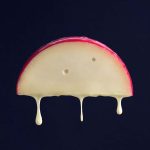
Katherine Hewlett
An Investigation of Spiral Thinking in Dyslexic Creative Visual Artists: a Socio-cultural Perspective
Numerous post 16 arts courses have been developed with a flexibility to enable individualised learning and to recognise dyslexic learner approaches to study. My research aims to explore how these learning approaches impact on creative processes and bring value to learning and teaching in mainstream post 16 education.
The research investigates dyslexic creative artists’ approaches to thinking and learning in the process of their practice and ways in which artists work to their strengths to navigate mainstream education. Central to the research is an investigation of the intelligences that dyslexic practitioners develop as part of their creative process.
Dyslexics are thought to be particularly expert at developing learning strategies that complement their learning styles. They deal with the overview, the broader picture, the whole before focusing on the parts (B. Steffert, 1999 Visual Spatial Ability and Dyslexia). They absorb information from many reference points at the same time, and often in a random order, sometimes leading to highly innovative thinking. This research will explore how typical these qualities are of creative artists who are dyslexic, exploring the elements of Art and Design education that might unlock individual potential.
Dyslexia is not solely a literacy issue, it is also a neurological condition affecting information processing and the understanding of meaning. It can affect people from all backgrounds and levels of IQ. Dyslexia may overlap related conditions such as dyspraxia, attention deficit disorder, dysphasia and dyscalculia. It is a variable condition and not all people with dyslexia display the same range of characteristics.
My approach to this research has been influenced by my own experiences and thought processes, which through reflection and action establish a basis for a broader understanding of the issues and topics being considered. The investigation is embedded within a model of action research and seeks to investigate how visual practitioners who are dyslexic use life experiences to navigate mainstream education.
An element of the research includes creative and reflective work based on my own visual practice. This part of the research examines the production of visual work (primarily drawing and printmaking) and analyses my creative approaches in relationship to environment change, context, scale, materials and patterns of production.